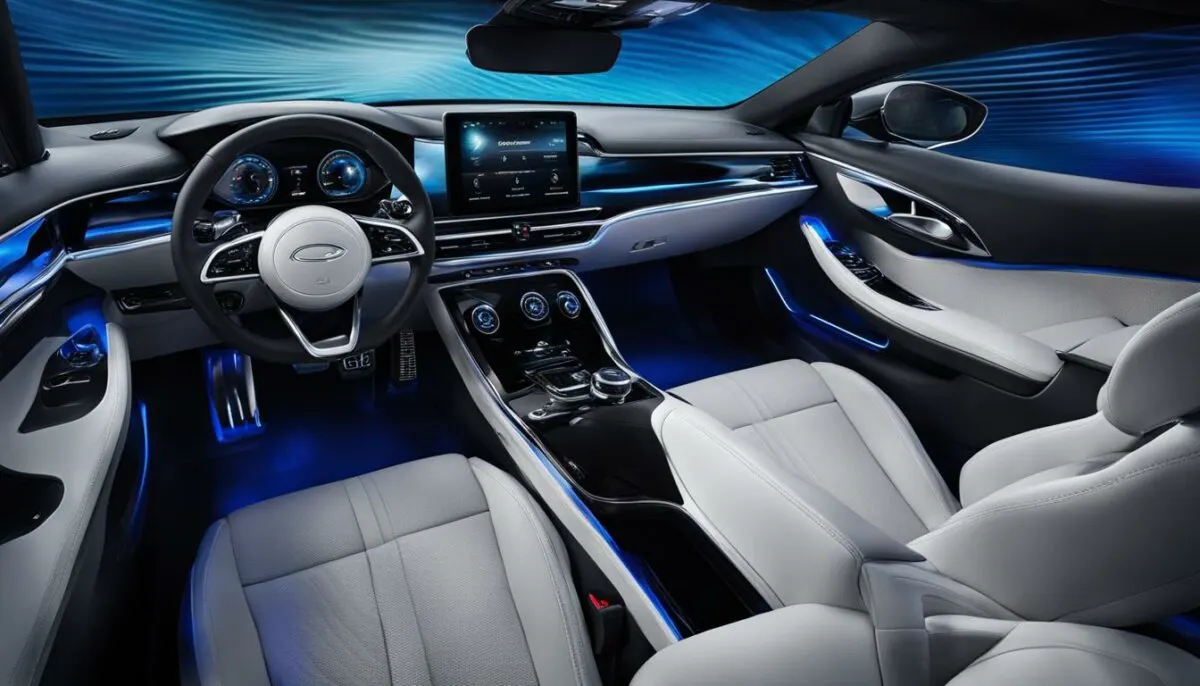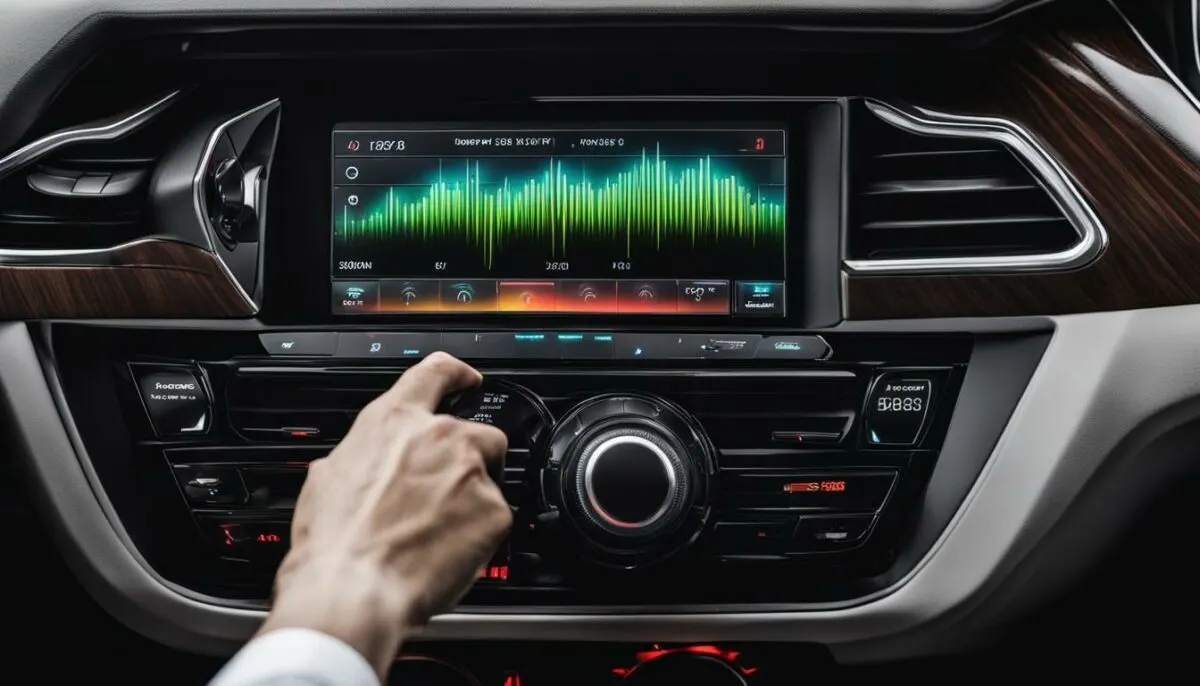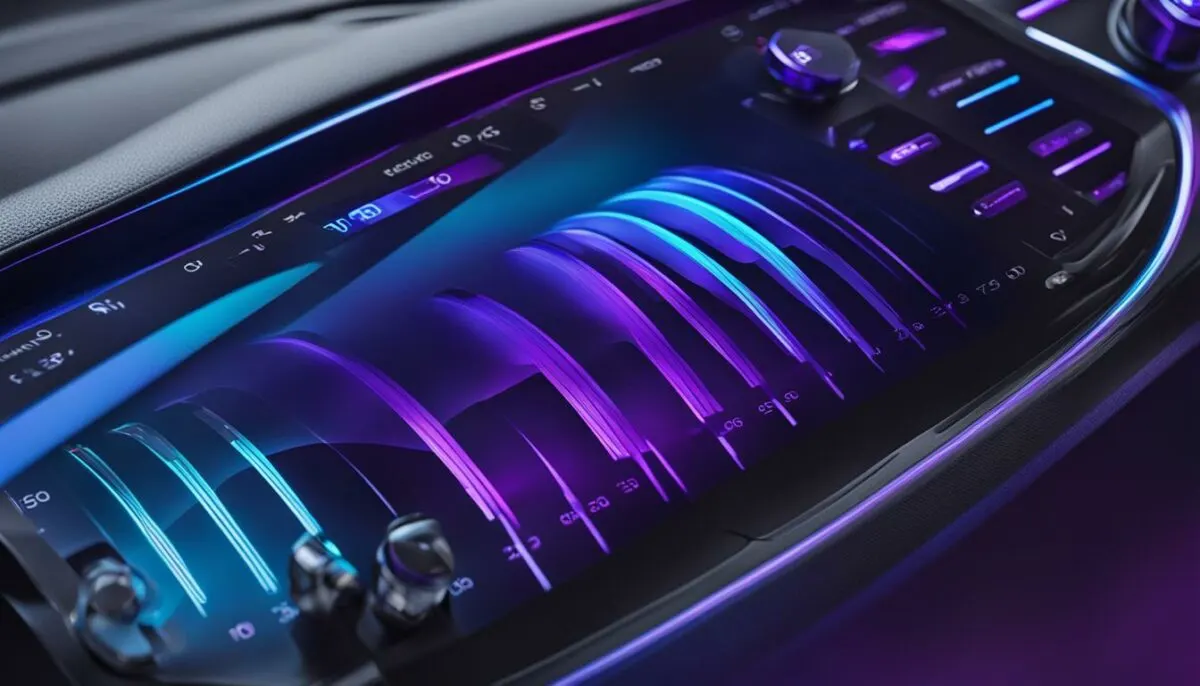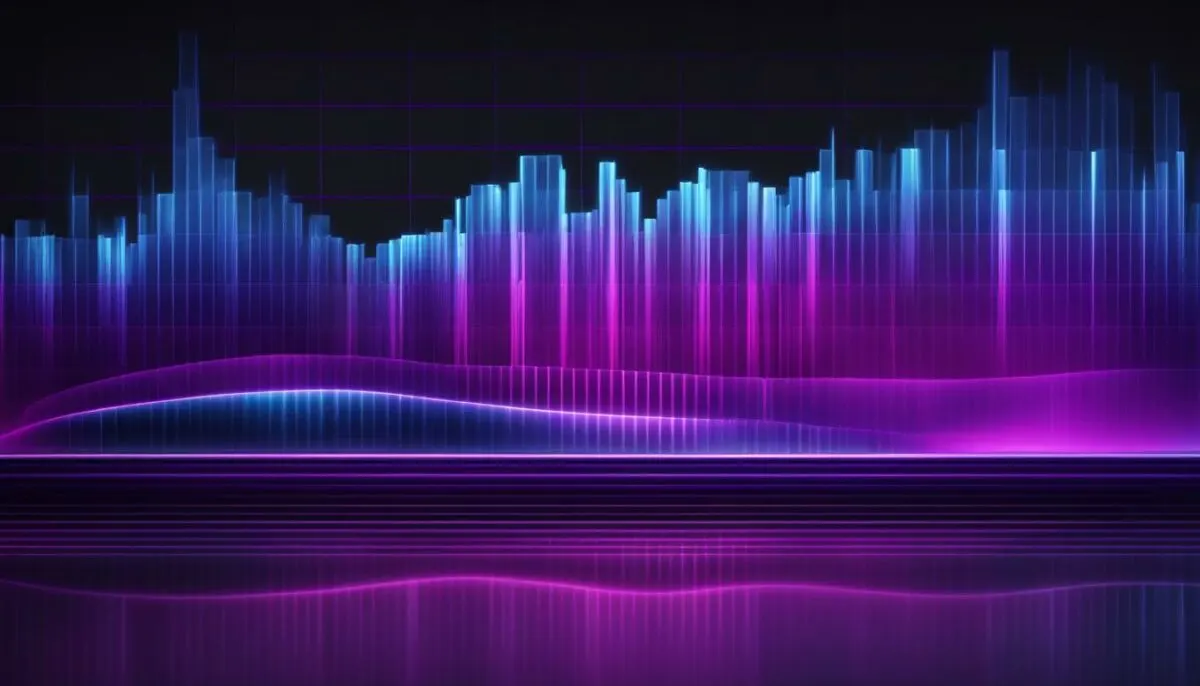Do you love listening to music while driving? Do you want to enhance your driving experience with powerful and immersive bass sound? If yes, then you need to optimize your car audio equalizer settings. By adjusting the equalizer levels, you can achieve a deep and impactful bass that will elevate your driving experience to a whole new level.
However, finding the right equalizer settings can be a daunting task, especially if you’re not familiar with the car equalizer system. That’s why we’ve put together this guide to help you understand the car equalizer and find the optimal equalizer settings for bass.
In this section, we will explore the best equalizer settings for bass in your car audio system. We will explain the importance of optimizing the bass settings and guide you through the process of finding the right frequency range. You will also learn how to adjust the equalizer settings to enhance the low and mid-bass frequencies, and manage the high frequencies to maintain a balanced sound.
Key Takeaways
- Adjusting equalizer levels can enhance the bass in your car audio system.
- It’s important to understand the car equalizer before adjusting the settings.
- Customizing the equalizer settings can help you achieve the best bass response for your specific setup.
- Fine-tuning and testing the equalizer settings can help you evaluate the quality and impact of the bass in your car audio system.
- Experiment with different settings to find the best equalizer settings for bass in your car.
Understanding the Car Equalizer
Before we dive into the best equalizer settings for bass, it’s important to understand the car equalizer itself. The car equalizer is a component in your car’s audio system that allows you to adjust the frequency levels of different sound ranges. With it, you can adjust the bass, midrange, and treble to optimize your overall sound experience.
To adjust the equalizer for bass, you’ll need to understand the different frequency bands and how they affect the sound output. Generally, the lower frequencies are responsible for the bass sound, while the higher frequencies create the treble. The midrange frequencies contribute to the overall warmth and fullness of the sound.
To access the equalizer settings in your car, refer to your car’s user manual and locate the audio system settings. Once you’ve accessed the equalizer settings, you can begin to adjust it to optimize the bass.
There are a few things to keep in mind when adjusting the equalizer for bass. First, it’s important to avoid over-amplifying the bass, as this can lead to distortion and loss of sound quality. Second, it’s crucial to adjust the bass levels based on the type of music you’re listening to, as different genres may require different bass levels. Lastly, take your car’s acoustics into consideration when adjusting the equalizer settings, as the sound quality can vary depending on the size and shape of your car’s interior.
How to Adjust Car Equalizer for Bass
To adjust the car equalizer for bass, follow these steps:
- Access the equalizer settings in your car’s audio system settings.
- Locate the bass adjustment levels and experiment with adjusting them up or down.
- Test the sound quality by listening to a song with a bass-heavy track and adjusting the levels until you achieve an optimal balance between bass and sound clarity.
- Save your settings and enjoy your newly optimized car audio system.
Car Equalizer Setup for Bass
In addition to adjusting the equalizer for bass, there are other ways to set up your car audio system to enhance the bass. One option is to add a subwoofer, which can provide a deep and powerful bass response. Another option is to soundproof your car’s interior, which can reduce outside noise and improve the overall sound quality of your car audio system.
When setting up your car audio system for bass, it’s important to ensure that all components are compatible and properly installed to avoid any damage to your car’s electrical system or audio equipment. For professional installation, consult with a car audio specialist.
The Importance of Bass Settings
When it comes to listening to music in your car, having the right bass settings can make all the difference. Optimizing the bass settings in your car audio system can enhance the richness and depth of your music, making your driving experience all the more enjoyable.
The bass settings in your car audio system can affect the overall sound quality by influencing the balance between the treble, midrange, and bass. It’s important to optimize these settings to create a well-balanced and impactful bass sound that complements the other frequencies.
When optimizing your car bass settings, it’s important to consider the type of music you listen to, the acoustics of your car, and your personal preferences. Finding the right balance between these factors can result in a powerful and immersive bass sound that enhances your listening experience.
Optimizing the bass settings in your car audio system can be achieved by tweaking the equalizer levels. With the right adjustments, you can achieve a deep and powerful bass response that elevates your listening experience.

Experimenting with different equalizer settings and taking the time to fine-tune them can result in the best bass response for your specific setup. By optimizing your car bass settings, you’ll be able to enjoy a superior sound experience every time you turn the ignition on.
Finding the Right Frequency Range
One of the most crucial factors in achieving optimal bass in your car sound system is finding the right frequency range. While some may think that turning up the bass boost is the solution, it can result in muffled and distorted sound, which can be detrimental to your listening experience.
Instead, it’s important to identify the frequency range that will allow you to achieve deep and powerful bass without sacrificing clarity. The ideal frequency range for deep bass in a car audio system is typically between 20Hz and 80Hz.
To identify the optimal frequency range for your car’s audio system, you can use a frequency sweep test tone. This test tone will play a sound that gradually increases in frequency, allowing you to identify the range in which the bass sounds most full and resonant.
Once you have identified the ideal frequency range, you can adjust the equalizer settings to enhance the bass within that range. By doing so, you’ll be able to achieve a well-balanced and impactful bass sound that will elevate your driving experience.

Adjusting the Low Frequencies
When it comes to enhancing the bass in your car audio system, adjusting the low frequencies, or sub-bass, is crucial. The sub-bass range typically falls between 20-60 Hz and is responsible for the deep rumbling sounds that add a punch to your music.
To optimize the sub-bass, start by reducing the frequency ranges above the sub-bass. This will prevent any overlap and distortion in the sound. Then, increase the sub-bass frequency range to your desired level. A good starting point is around 50-60 Hz, but feel free to experiment and adjust to your liking.
Another way to enhance the sub-bass is by adjusting the Q-factor, which controls the bandwidth of the frequencies affected by the equalizer. A narrower Q-factor will boost a specific frequency range, while a wider Q-factor will affect a broader range.

Keep in mind that boosting the sub-bass too much can result in distortion and muddiness. It’s important to find the right balance that complements your music and car’s acoustics.
“The sub-bass range is the foundation of your car audio system’s bass. Enhancing it will give your music a deep and powerful punch, elevating your driving experience to the next level.”
Enhancing the Mid-Bass Frequencies
After fine-tuning the low frequencies, it’s time to focus on enhancing the mid-bass frequencies. These frequencies are responsible for the warmth and impact of the bass, adding the punchiness that gives your music a well-rounded sound.
To adjust the mid-bass frequencies, start by increasing the EQ level from 80 Hz to around 200 Hz. This will boost the lower end of the mid-bass frequencies, providing a fuller and more impactful sound. However, be careful not to overdo it, as too much boost can result in muddiness and distortion.
Next, adjust the EQ level from 200 Hz to around 500 Hz. This range is where the upper end of the mid-bass frequencies resides, and increasing the level here will provide additional clarity and definition to the bass. Again, use caution not to overdo it.
For a helpful visual representation of the mid-bass frequencies, refer to the following table:
| Frequency | Impact on Sound |
|---|---|
| 80-200 Hz | Punchiness and fullness |
| 200-500 Hz | Clarity and definition |
Remember to use your ears to guide you as you adjust the levels. Play some bass-heavy tracks and experiment with different settings until you find your desired sound.

Next, we’ll explore how to manage the high frequencies to ensure a balanced sound and prevent distortion or overpowering of the bass.
Managing the High Frequencies
While bass is the focus, it’s important to strike a balance across all frequency ranges. This ensures the bass doesn’t overpower the other sounds, creating distortion or an unpleasant listening experience. We’ll explore how to manage the high frequencies using equalizer settings.
One way to manage the high frequencies is by lowering the level of the higher frequency bands. This can be done by adjusting the equalizer settings for the treble or high frequencies. Start by reducing them to about halfway and then testing by playing a song with a lot of high-frequency instruments like cymbals and hi-hats. If the high frequencies are still too loud, continue to lower them until you reach the desired balance.
Alternatively, you can also boost the low frequencies to create a more balanced sound. By raising the bass and lower midrange frequencies, it can reduce the perception of harshness in the higher frequencies. However, be careful not to boost too much as it can create muddiness in the lower frequencies.
How to Adjust the High Frequencies Using Equalizer Settings:
| Frequency Band | Level Adjustment |
|---|---|
| 4kHz-10kHz | Lower slightly to reduce harshness |
| 10kHz-20kHz | Lower to reduce high-frequency sounds |
| 20kHz and up | Leave at default level |
Remember to always test your settings by playing different types of music to ensure the high frequencies are not overpowering the other sounds. Fine-tune the settings until you achieve the optimal balance between all frequency ranges.

Customizing Your Equalizer Settings
While the previous sections have provided general guidelines on optimizing the equalizer settings for bass in your car audio system, it’s important to note that every car audio setup is unique. Customizing the equalizer settings based on your music preferences, car’s acoustics, and personal taste can make a significant difference in achieving the best bass response.
Start by experimenting with the pre-set equalizer settings in your car’s audio system. Most cars have pre-set equalizer settings such as rock, pop, classical, and jazz. Play around with these settings and see which one fits your liking. You can then use these pre-set settings as a starting point for further customization.
You can also refer to the user manual or manufacturer’s website for suggested equalizer settings based on the car’s make and model. These suggested settings can serve as a guide, but it’s important to remember that your personal taste and the acoustics of your car will ultimately dictate the optimal equalizer settings.
To further customize your equalizer settings, you can adjust the levels of each frequency band until you achieve the desired bass response. For example, if you prefer a deeper bass, you can increase the levels of the lower frequency bands. On the other hand, if you prefer a punchier bass, you can increase the levels of the mid-bass frequencies.
Remember to take your time in customizing the equalizer settings and don’t be afraid to experiment with different settings. Fine-tuning the equalizer settings can take time, but the end result will be well worth it.
Expert Tip
One way to test if you have achieved the best equalizer settings for bass in your car audio system is to listen to a song with a prominent bassline. The bassline should sound clear and not muffled, and you should be able to feel the impact of the bass. If the bassline sounds distorted or weak, you may need to adjust the equalizer settings further.

“Customizing the equalizer settings based on your music preferences, car’s acoustics, and personal taste can make a significant difference in achieving the best bass response.”
Fine-Tuning and Testing
Once you have adjusted your car audio equalizer settings, it’s essential to fine-tune and test the bass response to ensure optimal sound quality. The following tips will help you evaluate the bass and make possible necessary adjustments.
- Start with your favorite bass-heavy track. This will give you an idea of how the bass sounds in your car.
- Listen to a range of different tracks. This will let you evaluate how well your equalizer settings perform across different genres and styles of music.
- Check for distortion or muddiness. If you notice any distortion or muddiness in the bass, adjust the equalizer settings to correct the issue.
- Consider your car’s acoustics. The acoustics of your car can affect the sound quality. For example, if you have a lot of reflective surfaces, such as windows, you may need to adjust the equalizer settings accordingly.
- Remember to balance the sound. While it’s important to optimize the bass settings, you also need to maintain a balanced sound across all frequency ranges.
To help you evaluate the bass response, you can use a sound meter app on your phone. This will show you whether the sound is too loud or too quiet, so you can make adjustments accordingly.
With a little experimentation and fine-tuning, your car audio equalizer settings can provide rich, powerful bass to enhance your driving experience.

Conclusion
Optimizing the equalizer settings for bass in your car audio system can greatly enhance your driving experience. By understanding the car equalizer, finding the right frequency range, and customizing the settings, you can achieve a powerful and immersive bass sound. Experiment with different settings and take the time to fine-tune for the best results. Get ready to enjoy a superior sound experience every time you turn the ignition on.
Remember, the best equalizer settings for bass in car can vary depending on the make and model of your car, your personal preferences, and the type of music you listen to. Don’t be afraid to play around with the settings until you find the perfect balance.
Happy Listening!
FAQ
How do I adjust the equalizer settings in my car?
To adjust the equalizer settings in your car, you will need to access the audio settings menu on your car’s stereo system. From there, you can adjust the levels for different frequency bands to enhance the bass. Consult your car’s manual for specific instructions on accessing the equalizer settings.
What are the best equalizer settings for bass in a car?
The best equalizer settings for bass in a car can vary depending on your personal preference and the specific audio system in your car. However, a common approach is to boost the low frequencies (bass) while maintaining a balanced sound across the other frequency ranges. Experiment with different settings to find the combination that suits your taste and car’s acoustics.
How can I optimize the bass settings in my car audio system?
To optimize the bass settings in your car audio system, start by finding the right frequency range for bass. Adjust the equalizer settings to enhance the low frequencies (sub-bass) for deep rumbling sounds and the mid-bass frequencies for warmth and impact. Fine-tuning and testing the bass response with different tracks will help you achieve the best results.